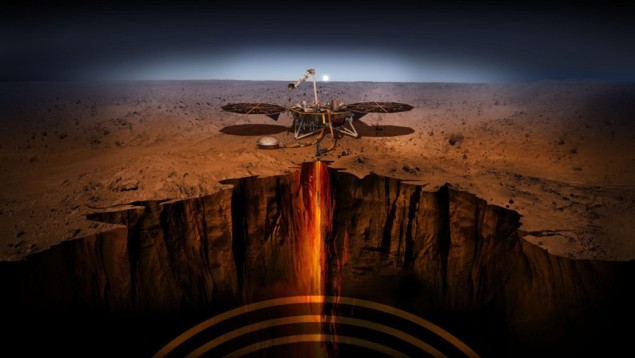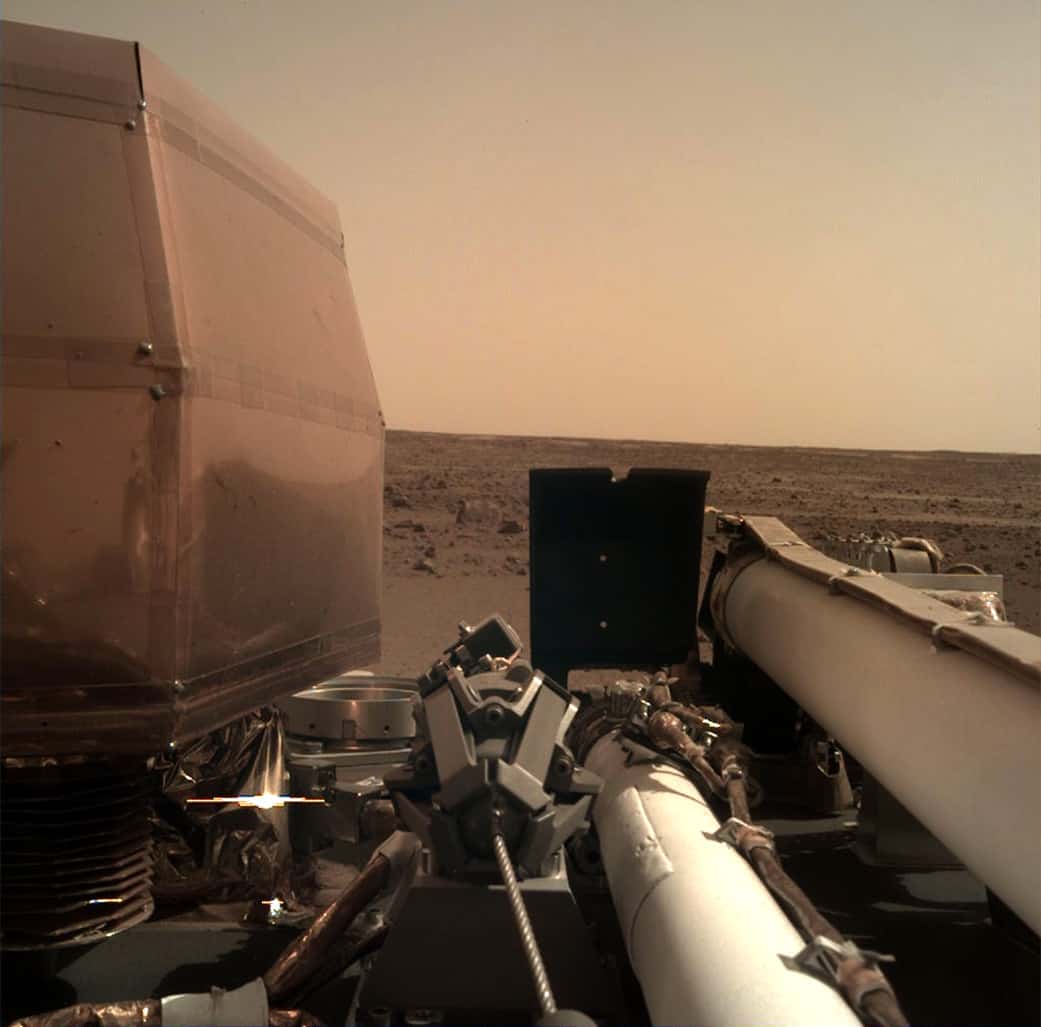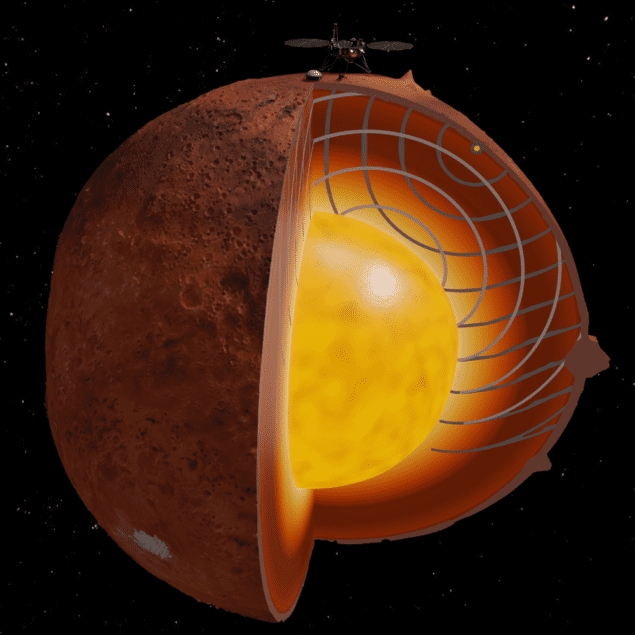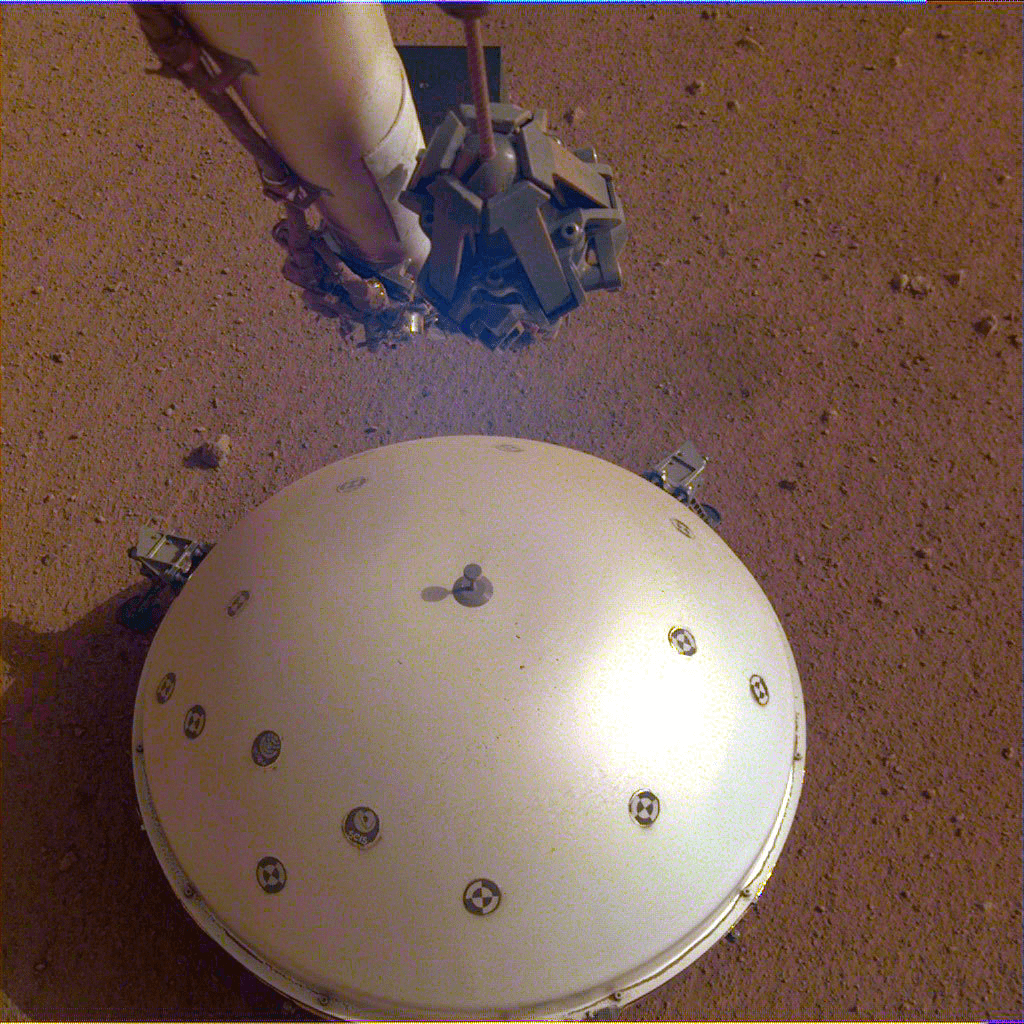
The interior of Mars has been mapped with seismic waves for the first time revealing tantalising details about how Mars may have formed across billions of years. The work was done by NASA’s Interior Exploration Using Seismic Investigations, Geodesy and Heat Transport (Insight) craft that landed in Elysium Planitia, close to the Martian equator, in November 2018. Since then, its seismometer has detected more than 500 marsquakes produced by tectonic stresses, albeit none stronger than magnitude 4 on the Richter scale.
The quakes send seismic waves reverberating through the interior of the red planet. Their strength and their velocity depends upon the composition of the material they are passing through, and hence they provide a window into Mars’ inner structure. Now three new papers show that Mars’ interior has crucial differences to Earth’s. “Mars is smaller and therefore cools faster than Earth,” says Amir Khan of the Institute of Geophysics at ETH Zurich, who is the lead author of one of the papers that studied the upper mantle.
The seismic findings show that Mars’ core, where most of the planet’s heat originates from, is slightly larger than expected, with a radius of about 1800 km against the Mars’ full radius of 3390 km. With a larger size comes a low density, the core enriched with light elements such as sulfur, which remains with the iron, and acts to reduce the temperature at which the core solidifies. Consequently, Mars’ core remains completely liquid, despite the amount of heat escaping.

NASA’s Insight mission successfully lands on Mars
This heat escape is exacerbated by the lack of a bridgmanite layer in Mars’ lower mantle. Bridgmanite is the most common mineral on Earth, but because it is buried 660 km below the surface where the temperatures and pressures are high enough for it to form, it is rarely seen. However, the seismic data collected by InSight implies that Mars lacks a bridgmanite layer. “Bridgmanite acts as a barrier to convection inside Earth,” says Simon Stähler, also of ETH Zurich and lead author of a paper that describes Mars’ core and lower mantle. Rising mantle plumes have their progression slowed by this layer, reducing the exchange of heat between the core and the surface.
A thick, layered crust
Mars’ surface lies on top of a crust that is, on average, thicker than Earth’s crust, and is composed of several layers according to Brigitte Knapmeyer-Endrun, who is the lead author of a seismic study that shows two, or possibly three, crustal layers. The uppermost layer extends to a depth between 6 and 11 km, while a second layer goes down between 15 and 25 km. A third layer, if it exists, would then extend to 39 km below the surface at InSight’s location, but the measurements made so far are unable to distinguish between the two- and three-layer scenarios.

“The rather low seismic velocities that we find for the uppermost layer is probably due to a significant amount of porosity, which could mean rocks that have been fractured due to repeated meteorite impacts, and chemical alteration,” Knapmeyer-Endrun told Physics World. The other layers are probably less fractured and altered but could have a different composition.
Earth’s crust also has multiple layers, but is much thinner on average, being “roughly 30 km thick below continents but only 7 km thick beneath oceans,” says Sanne Cottaar, who is a global seismologist from the University of Cambridge. “The differences [between Earth and Mars’ interior] have much to do with Mars having a single, stable lid, while Earth has plate tectonics.”
Mysteries of Mars
Between 4.5 and 4.7 billion years ago, Mars had a global magnetic field, generated by a thermal geodynamo driven by heat exchange between the core and the mantle. This geodynamo somehow switched off when too much heat had leaked from the core. This differs from Earth, where the geodynamo is created by heat emitted by the ongoing solidification of the inner core.

First-ever detection of a ‘Marsquake’ made by NASA’s InSight mission
InSight’s initial results have provided a rough guide to the interior of Mars, and it is also the first time that a rocky planet other than Earth has had its interior mapped in such fashion. Further detections of seismic waves will provide greater resolution, and the results can be fed into models of how Mars – and indeed other planets – formed and developed.
“Mars presents unique questions,” says Cottaar. “There’s the mystery of the early magnetic field that died, the strange topography where the southern hemisphere is high and the northern hemisphere is low, and the very localised volcanism. The new constraints provided by the seismic data can now be used to model whether these are caused by Mars’ thermal and dynamical history.”
The three papers are published in Science.
